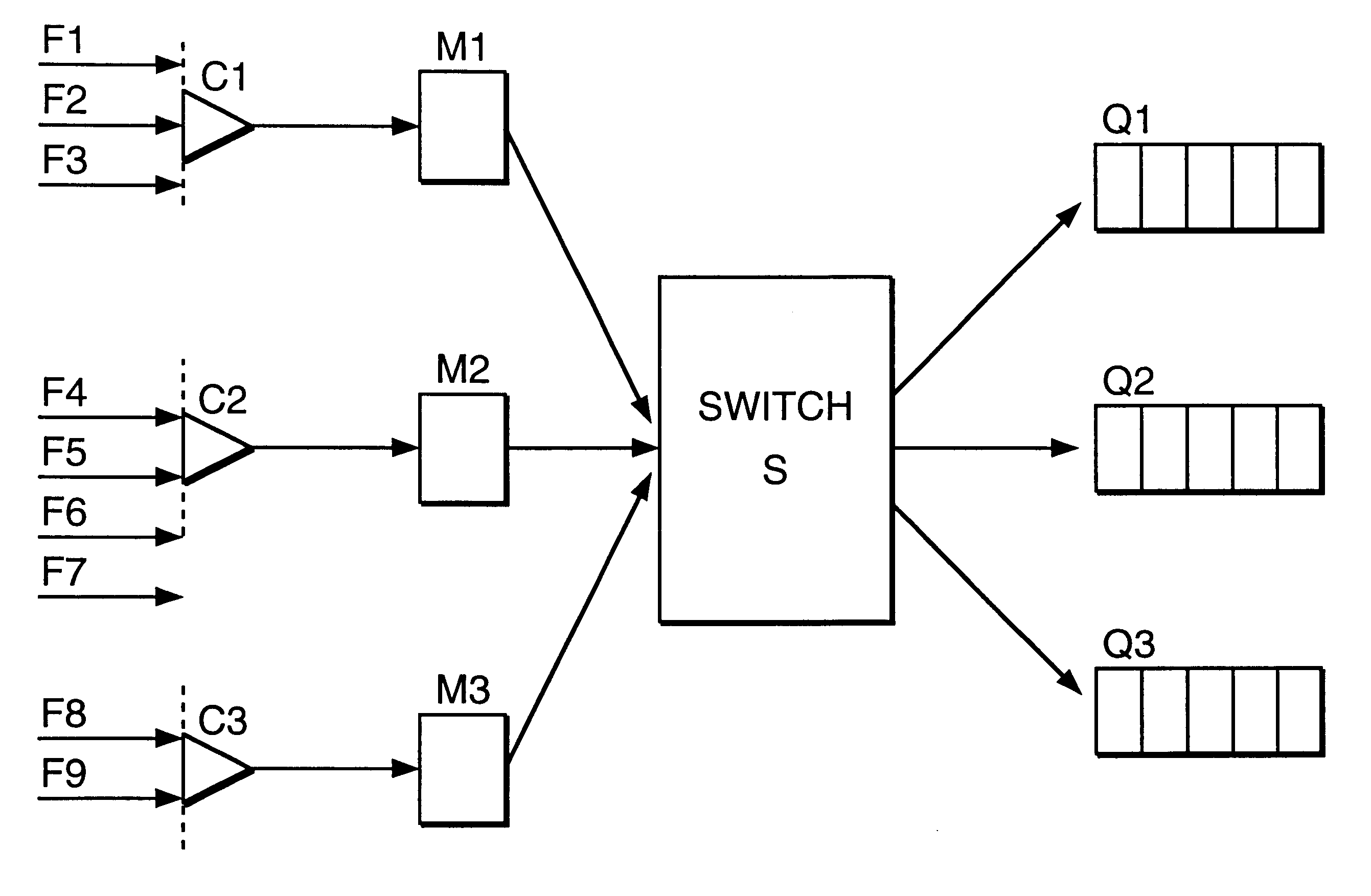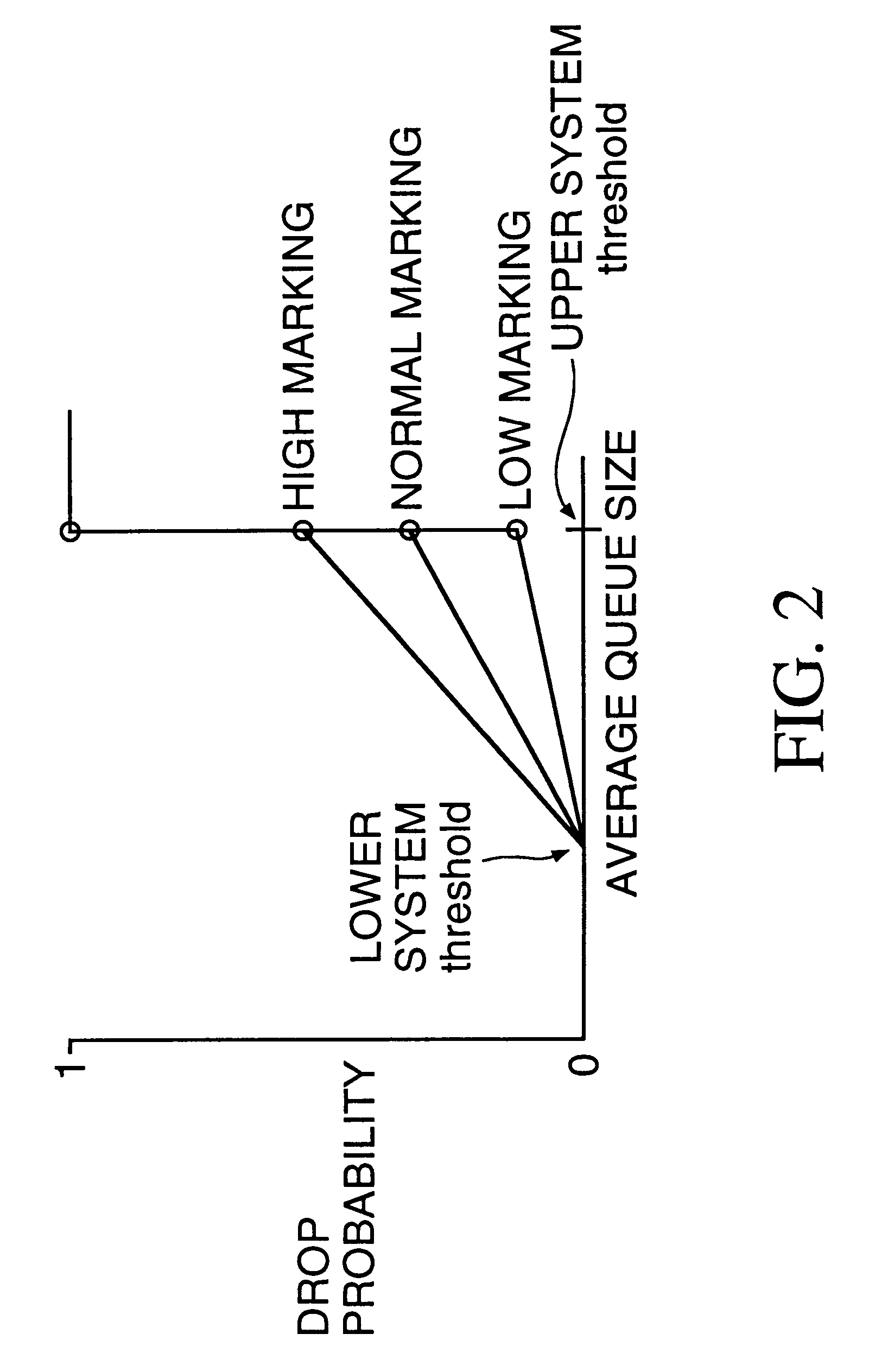System performance in a data network through queue management based on ingress rate monitoring
a data network and queue management technology, applied in data switching networks, instruments, frequency-division multiplexes, etc., can solve problems such as packet drop, poor performance for underlying tasks, and further congestion
- Summary
- Abstract
- Description
- Claims
- Application Information
AI Technical Summary
Problems solved by technology
Method used
Image
Examples
Embodiment Construction
Exemplary Embodiment
As shown in FIG. 1, a preferred embodiment of a method for optimizing performance in a data network in accordance with the present invention includes data channels C1-C3, which take as inputs data from the Flows F1-F9. The channels pass data through traffic monitors M1-M3, to a switch S, which in turn passes the data to Queues Q1-Q3. The numbers of flows, channels, monitors, switches, and queues are not restricted. The embodiment is presented here with illustrative numbers of components.
The data in each of flows F1-F9 comprises a sequence of packets (i.e., units of data). The packets corresponding to a given flow (i.e., one of F1-F9) pass through a designated channel (i.e., one of C1-C3), through a designated traffic monitor (i.e., one of M1-M3), and are routed by Switch S to a designated queue (i.e., one of Q1-Q3). As part of the process control, each packet is marked in the corresponding traffic monitor through which the packet passes (i.e., one of M1-M3). Pref...
PUM
 Login to View More
Login to View More Abstract
Description
Claims
Application Information
 Login to View More
Login to View More - R&D
- Intellectual Property
- Life Sciences
- Materials
- Tech Scout
- Unparalleled Data Quality
- Higher Quality Content
- 60% Fewer Hallucinations
Browse by: Latest US Patents, China's latest patents, Technical Efficacy Thesaurus, Application Domain, Technology Topic, Popular Technical Reports.
© 2025 PatSnap. All rights reserved.Legal|Privacy policy|Modern Slavery Act Transparency Statement|Sitemap|About US| Contact US: help@patsnap.com



